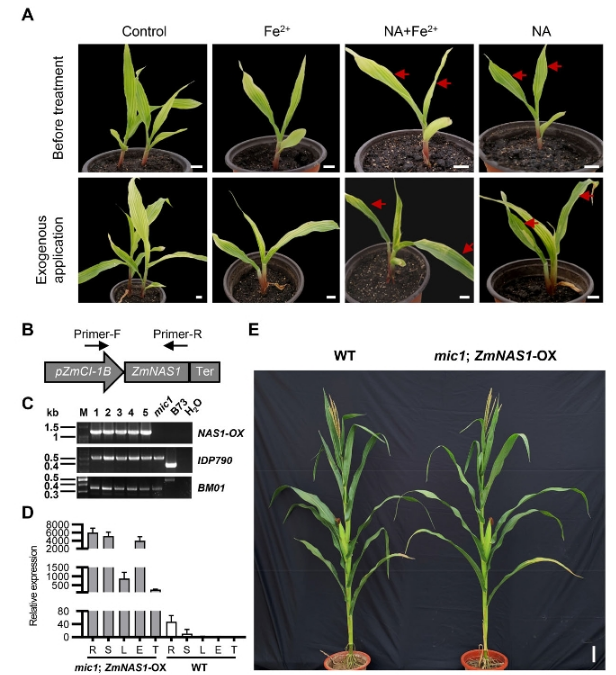Abstract:
The Yang cycle is involved in many essential metabolic pathways in plant growth and development. As extended products of the Yang cycle, the function and regulation network of ethylene and polyamines are well characterized. Nicotianamine (NA) is also a product of this cycle and works as a key metal chelator for iron (Fe) homeostasis in plants. However, interactions between the Yang cycle and NA biosynthesis remain unclear. Here, we cloned maize interveinal chlorosis 1 (mic1), encoding a 5'-methylthioadenosine nucleosidase (MTN), that is essential for 5'-methylthioadenosine (MTA) salvage and NA biosynthesis in maize (Zea mays). A single base G-A transition in the fourth exon of mic1 causes a Gly to Asp change, resulting in increased MTA, reduced Fe distribution, and growth retardation of seedlings. Knockout of ZmMIC1 but not its paralog ZmMTN2 by CRISPR/Cas9 causes interveinal chlorosis, indicating ZmMIC1 is mainly responsible for MTN activity in maize. Transcriptome analysis showed a typical response of Fe deficiency. However, metabolic analysis revealed dramatically reduced NA content in mic1, suggesting NA biosynthesis was impaired in the mutant. Exogenous application of NA transiently reversed the interveinal chlorosis phenotype of mic1 seedlings. Moreover, the mic1 mutant overexpressing a NA synthase gene not only recovered from interveinal chlorosis and growth retardation but was also fertile. These findings provide a link between the Yang cycle and NA biosynthesis, which highlights an aspect of Fe homeostasis regulation in maize.
Keywords:5'-METHYLTHIOADENOSINE NUCLEOSIDASE;METHIONINE SALVAGE;ETHYLENE SYNTHESIS;IRON-DEFICIENCY;GENES;SULFUR;METABOLISM;ENCODES;CLONING;GROWTH



